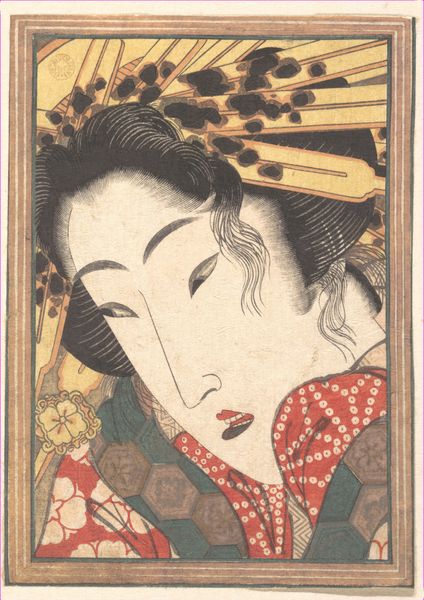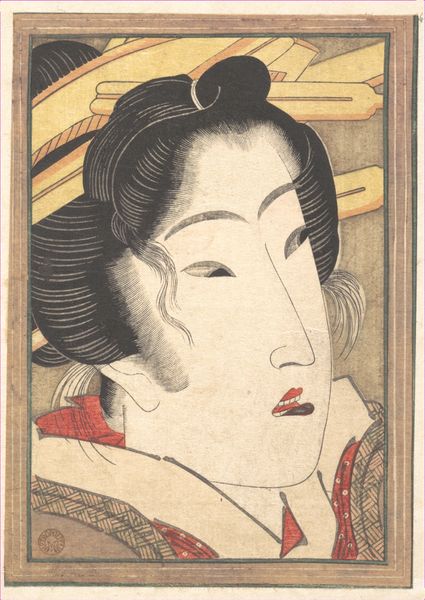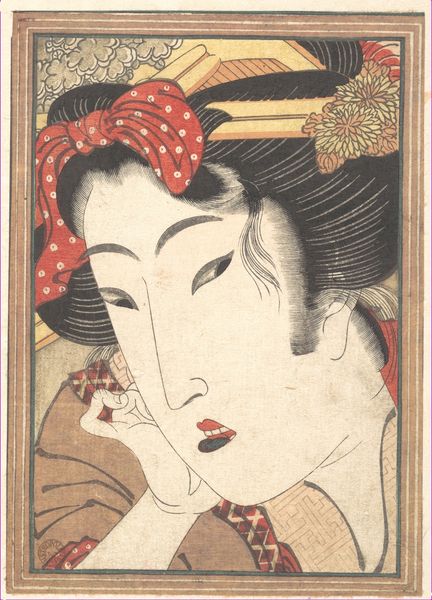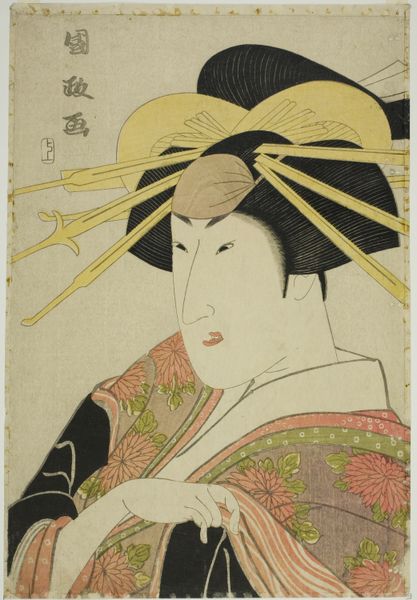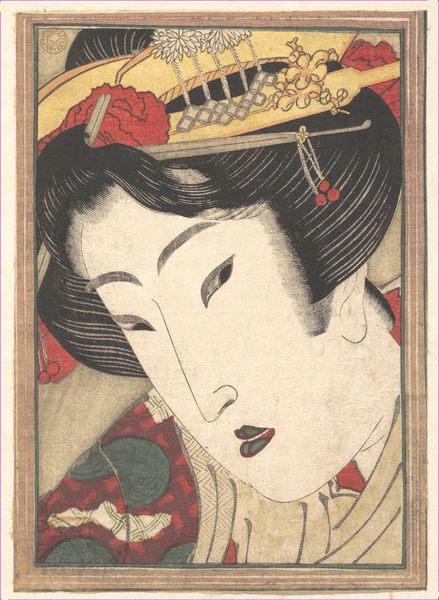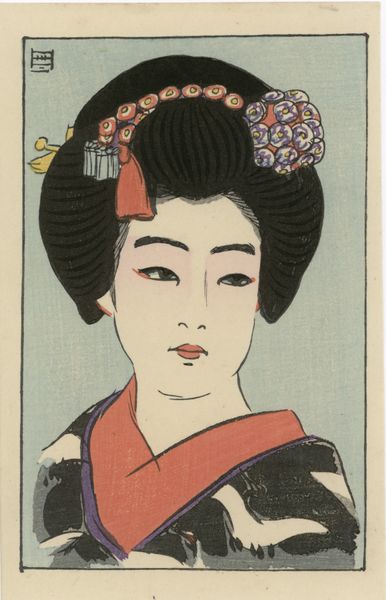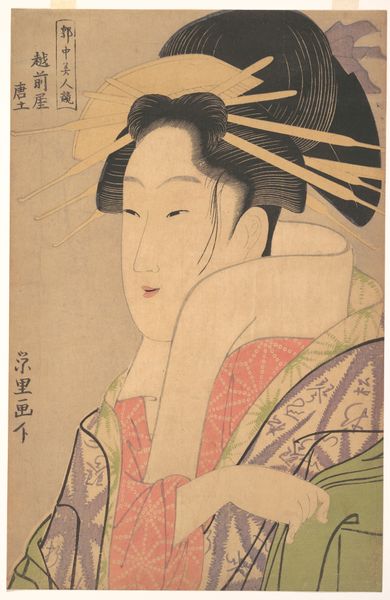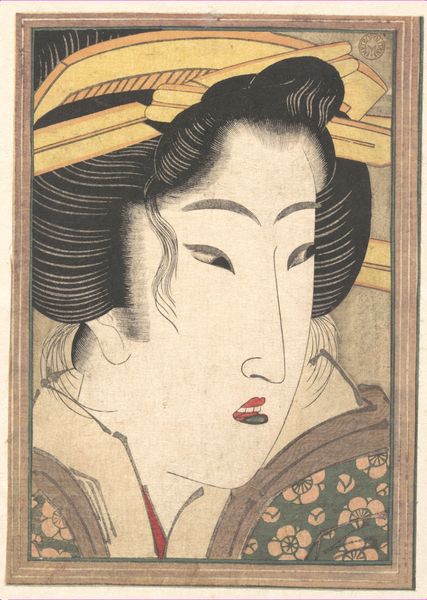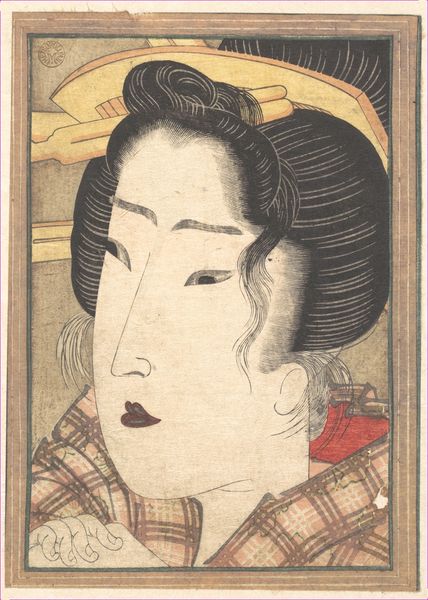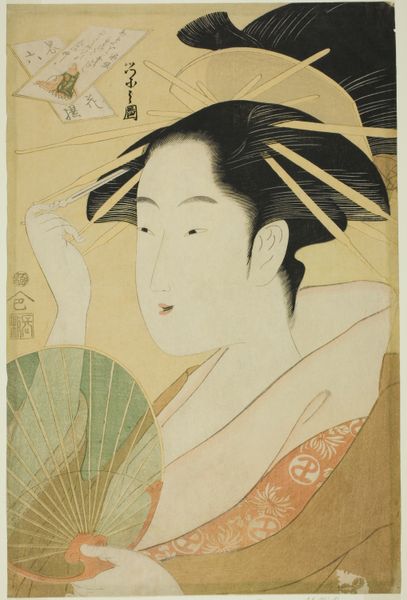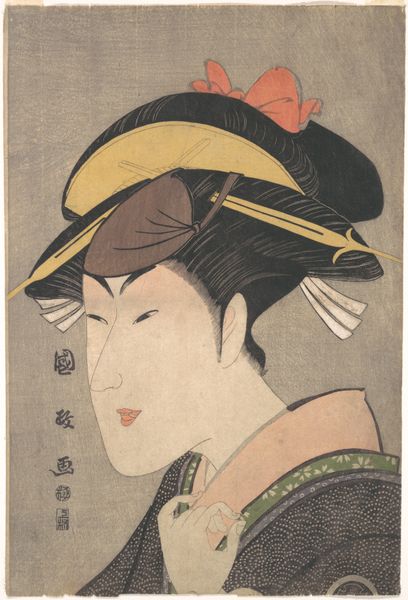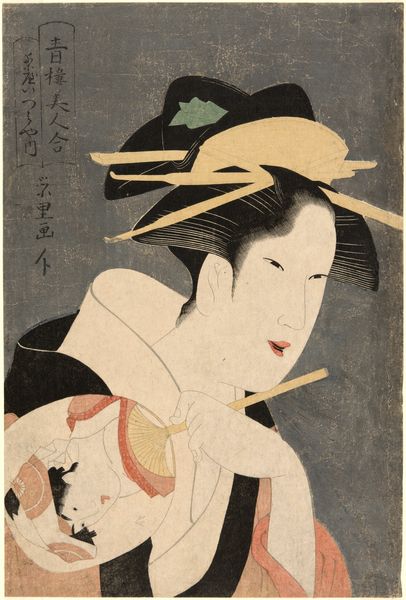
Rejected Geisha from Passions Cooled by Springtime Snow 1824
0:00
0:00
Dimensions: H. 7 in. (17.8 cm); W. 5 in. (12.7 cm)
Copyright: Public Domain
Editor: This is Keisai Eisen’s “Rejected Geisha from Passions Cooled by Springtime Snow,” a woodblock print from 1824. I find the downward gaze so striking, almost melancholic. What symbols or meanings do you see embedded in this portrait? Curator: The title itself points to a rich tapestry of cultural symbols. “Springtime Snow” suggests fleeting beauty, a cooling of passions. And the figure's downcast eyes—typical of ukiyo-e portraits, but here perhaps more pronounced—could represent resignation or inner reflection. Notice, too, the intricate patterns of her kimono. Editor: Yes, the kimono is fascinating! Are there any specific motifs there that are particularly significant? Curator: Absolutely. Though difficult to discern clearly in reproduction, motifs related to nature, like bamboo or plum blossoms, were common and layered with meaning. They symbolized resilience, renewal, or even idealized beauty, respectively, within the language of dress. These weren't merely decorative. Do you sense how this plays into her story of rejection? Editor: I see what you mean; they juxtapose against this feeling of melancholy, like an ironic commentary on beauty's fleeting nature. Curator: Precisely. It also underscores how the geisha’s personal narrative is intertwined with larger cultural expectations about female beauty and conduct. So, she is also a representative symbol. Editor: That is helpful! I came looking for an isolated portrait, but am leaving having thought about society. Thank you! Curator: The image resonates, even across centuries, due to Eisen’s layering of the symbolic and the personal.
Comments
No comments
Be the first to comment and join the conversation on the ultimate creative platform.
